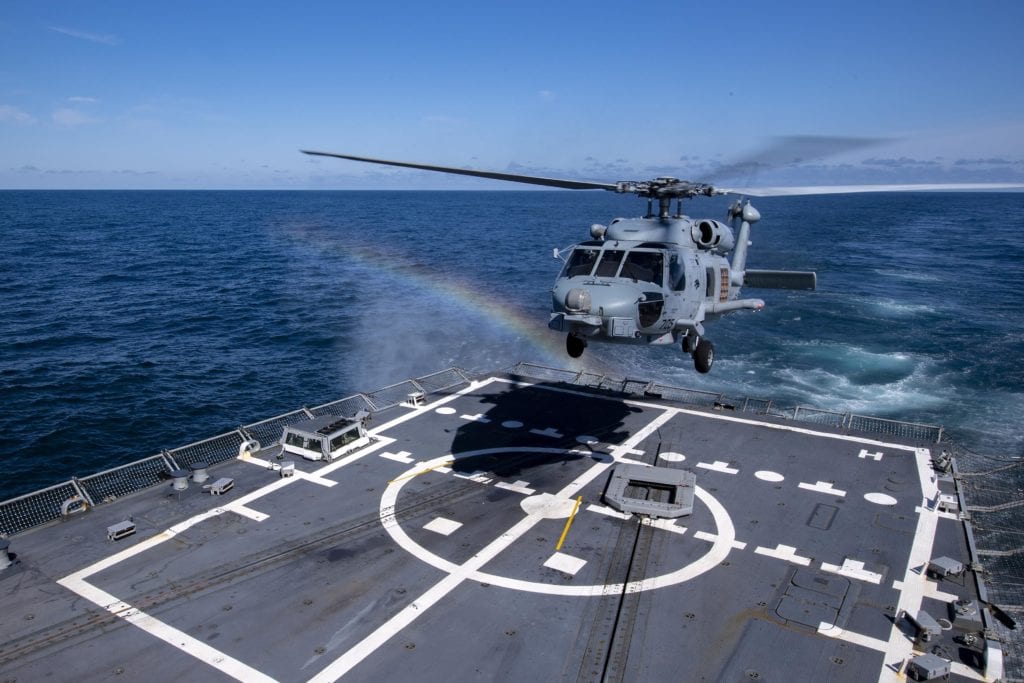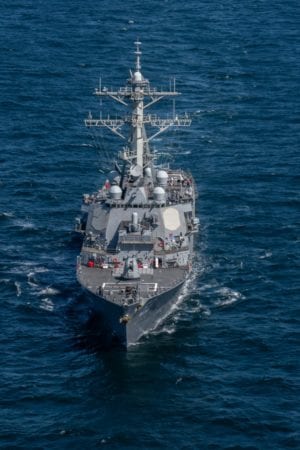
Conservation entities concerned about the environmental impact of future military exercises are urging the U.S. Navy to update information compiled to date with new data and impose stronger mitigation to protect marine life in the Gulf of Alaska.
Their letter to the Naval Facilities Engineering Command Northwest, in Silverdale, Washington, contends that the Navy’s draft environmental impact statement fails to analyze a reasonable range of alternatives to protect fish, whales and other wildlife in the Gulf from impacts of war games beyond 2022. Adverse effects on wildlife may diminish their ability to breed, feed, navigate and avoid predators, as well as impacting other factors influencing their chances for survival. The letter was signed by the Eyak Preservation Council, Native Conservancy, Alaska Marine Conservation Council, Center for Biological Diversity, and Natural Resources Defense Council.
The letter concluded that the Navy should prepare a revised draft supplemental environmental impact statement with a fair analysis of impacts of military training activities on fish, marine mammals and other marine life, consider new information, and put in place stronger mitigation for the protection of the Gulf’s marine ecosystem.
The Feb. 16 letter cited requirements of the National Environmental Policy Act, and Marine Mammals Protection Act, both of which require detailed statements of alternatives considered, as well as what the letter signers consider a cursory analysis that stated no fishing resources would be impacted.
“The Copper River and Prince William Sound salmon fisheries have had three disastrous commercial fishing seasons in a row where fish have returned extremely low in numbers and the fish smaller in size,” the letter said. “These salmon fisheries are critical to the Prince William Sound’s Native villages and thousands of fishermen whose livelihoods depend on their unique subsistence and the commercial fishing way of life.”
Navy officials responded at length on Feb. 23, saying they plan to continue to implement mitigation measures to avoid or reduce potential impacts on marine species and the environment during training activities and to minimize effects to other users of maritime areas.

Critics alleged that the Navy’s supplemental 2020 environmental impact statement and overseas environmental impact statement, or EIS/OEIS, is inadequate and that NEPA requires federal agencies to prepare an EIS for all major federal actions significantly affecting the quality of human environment. Navy officials responded that all comments received on the draft EIS/OEIS will be addressed in the final EIS/OEIS, which is expected to be released in the winter or 2022. The Navy felt that changed from the current supplemental EIS/OEIS contained an appropriate level of analysis because there are no major changes in proposed training activities included, officials said. The geographic extent of the Gulf of Alaska temporary maritime activities are has not changed from those covered in final environmental documents compiled in 2011 and 2016, and no new or increased activities are proposed at this time, they said.
The supplemental EIS/OEIS is being prepared to renew regulatory permits and authorizations required under the Marine Mammal Protection Act and the Endangered Species Act, they said.
New information includes an updated acoustic effects model, updated marine species density data and hearing criteria and other emergent best available science, and will support renewal of federal regulatory permits and authorizations that expire in April 2022, they said.
In striving to be good stewards of the environment during all at-sea activities, the Navy in 2019 funded $20 million in marine species research and monitoring projects around the world, they said.
At this time the final supplemental EIS/OEIS is expected to be completed in the winter of 2022, followed by the record of decision, although those dates are subject to change. Once the final supplemental EIS/OEIS is available, a notice will be published in the Federal Register and in local newspapers, and the document will be available to view and download on the project website, they said.
Meanwhile the 2021 Northern Edge war game are to proceed under existing permits and authorizations granted based on the analysis in the 2016 Gulf of Alaska final supplemental EIS/OEIS and the April 2017 record of decision.





